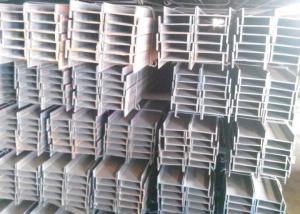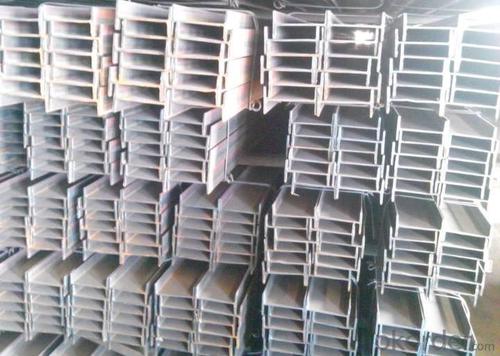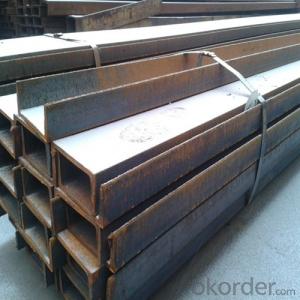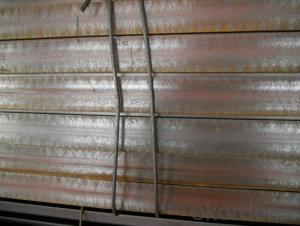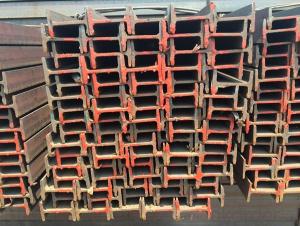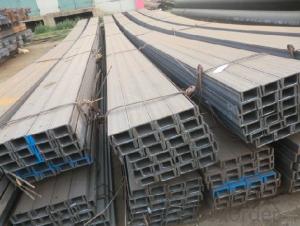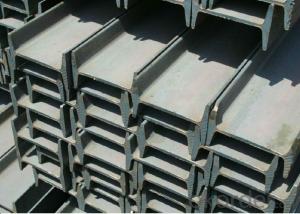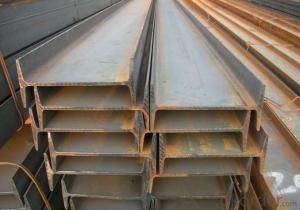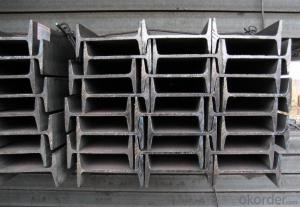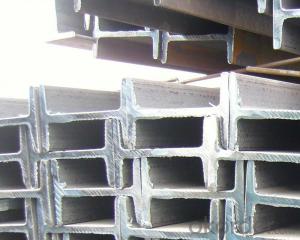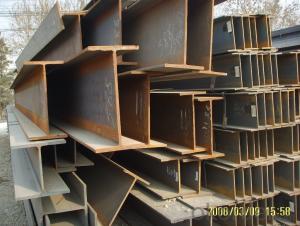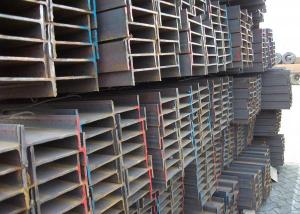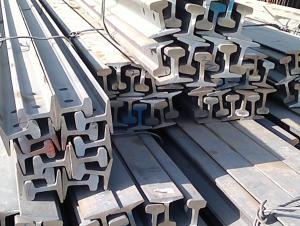Hot Rolled Steel I Beams
- Loading Port:
- Tianjin Port, China
- Payment Terms:
- TT or LC
- Min Order Qty:
- 25MT m.t.
- Supply Capability:
- 10000MT m.t./month
OKorder Service Pledge
OKorder Financial Service
You Might Also Like
Specifications of Hot Rolled Steel I Beam
Standard: ASTM A36, EN10025, JIS, GB, etc.
Grade:S275, S355, SS400, Q235B, A36, etc
Sizes: 80MM-270MM
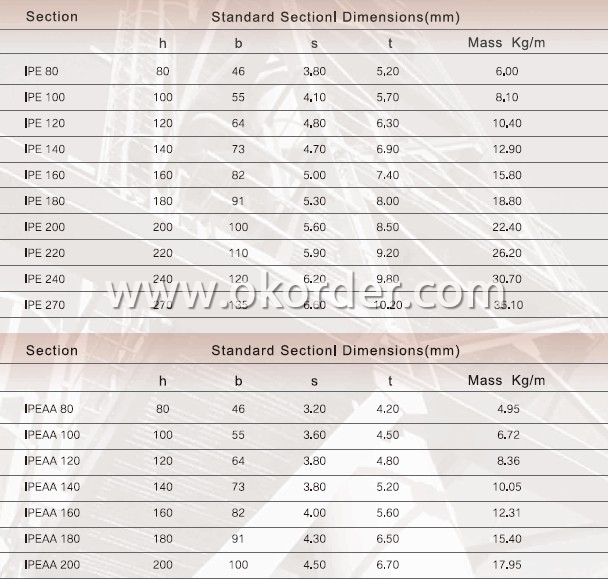
Applications of Hot Rolled Steel I Beam
Hot Rolled Steel I Beam is widely used in various building structures and engineering structures such as roof beams, bridges, transmission towers, hoisting machinery and transport machinery, ships, industrial furnaces, reaction tower, container frame and warehouse etc.
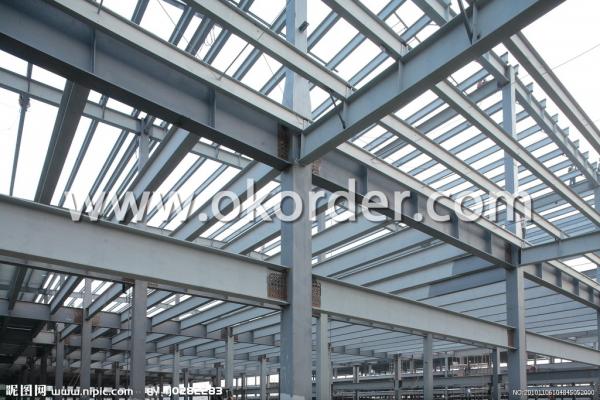
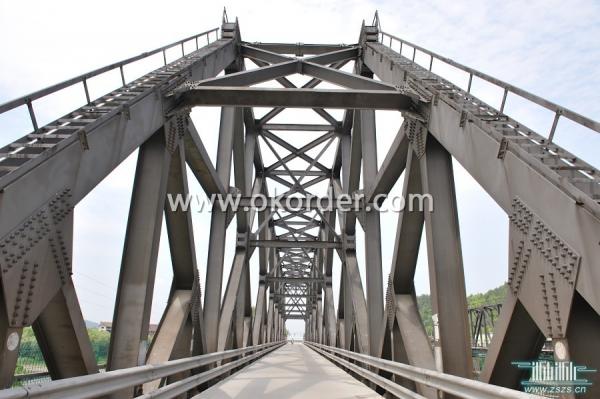
Package & Delivery Terms of Hot Rolled Steel I Beam
1. Package: All the hot rolled steel I beam will be tired by wire rod in bundles
2. Bundle weight: not more than 3.5MT for bulk vessel; less than 3 MT for container load
3. Marks:
Color marking: There will be color marking on both end of the bundle for the cargo delivered by bulk vessel. That makes it easily to distinguish at the destination port.
Tag mark: there will be tag mark tied up on the bundles. The information usually including supplier logo and name, product name, made in China, shipping marks and other information request by the customer.
If loading by container the marking is not needed, but we will prepare it as customer request.
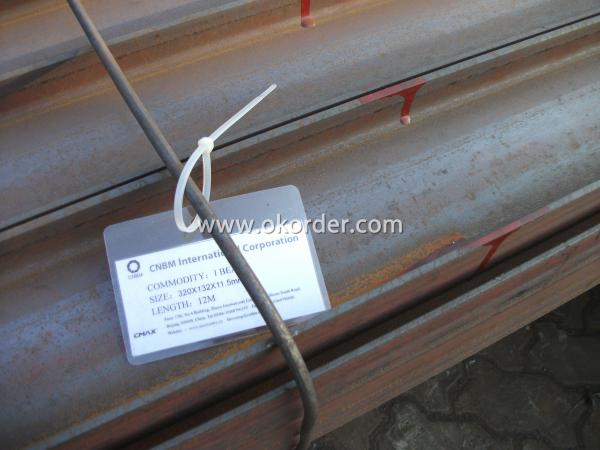
4. Transportation: the goods are delivered by truck from mill to loading port, the maximum quantity can be loaded is around 40MTs by each truck. If the order quantity cannot reach the full truck loaded, the transportation cost per ton will be little higher than full load.
5. Shipment: In containers or in bulk cargo
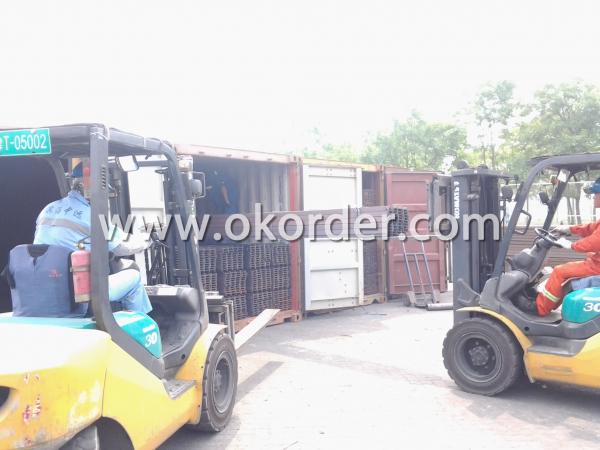
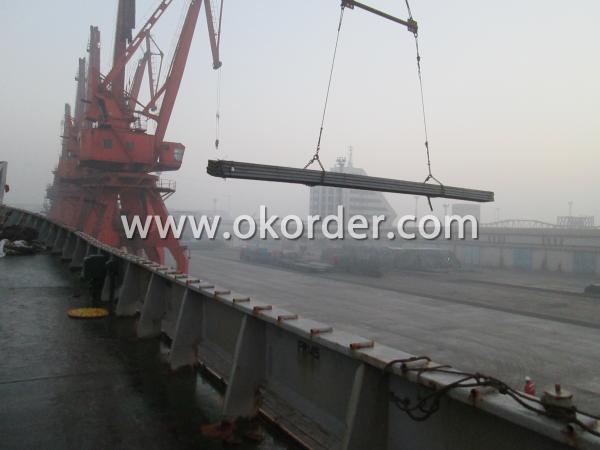
6. Delivery time: All the hot rolled steel I Beam will be at the port of the shipment within 45 days after receiving the L/C at sight ot the advance pyment by T/T
7. Payment: L/C at sight; 30% advance payment before production, 70% before shipment by T/T, etc.
Production flow of Hot Rolled Steel I Beam
Material prepare (billet) —heat up—rough rolling—precision rolling—cooling—packing—storage and transportation
- Q: What are the considerations for steel I-beam design in extreme temperatures?
- When designing steel I-beams for extreme temperatures, there are several crucial factors that need to be taken into consideration. To begin with, it is of utmost importance to comprehend the impact of temperature on the mechanical properties of the steel. As the temperature increases, the strength and stiffness of the steel decrease, and this reduction can be quite significant under extremely high or low temperatures. Consequently, the design must account for these variations in material behavior to ensure the structural integrity and safety of the I-beam. Another factor to consider is thermal expansion and contraction. When heated, steel expands, and when cooled, it contracts. This thermal movement can introduce stresses and potential deformations in the I-beam. To address these effects, appropriate expansion joints or allowances should be integrated into the design, allowing for thermal movement without compromising the overall stability of the structure. In extremely cold temperatures, steel becomes more brittle, thereby increasing the risk of fracture. Therefore, the design should incorporate measures to prevent brittle fracture. This can be achieved by utilizing steel grades with good low-temperature toughness or by including additional reinforcement to enhance the beam's resistance to cracking. Furthermore, extreme temperatures can also impact the corrosion resistance of steel. In high-temperature environments, steel may be exposed to aggressive chemical reactions that expedite corrosion. Therefore, it is crucial to apply suitable protective coatings or materials to prevent corrosion and prolong the service life of the I-beam. Moreover, it is vital to consider the effects of temperature on the surrounding environment. For instance, if the steel I-beam is exposed to extreme heat, such as during a fire, it may require a design that can withstand elevated temperatures for a specific duration to ensure structural stability and prevent collapse. All in all, the design of steel I-beams for extreme temperatures necessitates a comprehensive understanding of material properties, thermal expansion, the potential for brittle fracture, corrosion resistance, and the surrounding environment. By carefully considering these factors, engineers can develop robust and safe designs capable of withstanding extreme temperature conditions.
- Q: Are there any building codes or regulations that govern the use of steel I-beams in construction?
- Yes, there are building codes and regulations that govern the use of steel I-beams in construction. These codes and regulations are put in place to ensure the structural integrity and safety of buildings. The specific codes and regulations may vary depending on the country or region, but they generally cover aspects such as the design, fabrication, installation, and inspection of steel I-beams. In the United States, for example, the use of steel I-beams is regulated by the International Building Code (IBC). The IBC provides guidelines for the design and construction of buildings, including the use of structural steel components like I-beams. It specifies requirements for factors such as the size and shape of the I-beams, the connection details, and the load-bearing capacities. Compliance with the IBC ensures that the steel I-beams used in construction meet the necessary safety standards. Other countries may have their own building codes and regulations that specifically address the use of steel I-beams. For instance, in the United Kingdom, the regulations are outlined in the Building Regulations. These regulations cover various aspects of construction, including the use of steel beams, and provide guidelines for their design, fabrication, and installation. It is essential for architects, engineers, and contractors to familiarize themselves with the applicable building codes and regulations in their respective jurisdictions to ensure compliance with the necessary standards when using steel I-beams in construction. By adhering to these codes and regulations, they can ensure the structural integrity and safety of buildings, as well as meet the legal requirements for construction projects.
- Q: How do steel I-beams compare to fiberglass I-beams in terms of strength and durability?
- Steel I-beams are generally considered to be stronger and more durable than fiberglass I-beams. Steel is a much stronger material compared to fiberglass, which means that steel I-beams can bear heavier loads and withstand more stress without deforming or breaking. Additionally, steel has a higher resistance to fire, extreme temperatures, and chemicals, which further enhances its durability. Fiberglass I-beams, on the other hand, are lighter and more flexible than steel I-beams. This makes them suitable for certain applications where weight is a concern or where flexibility is required. Fiberglass I-beams also have excellent corrosion resistance, making them ideal for environments that are exposed to chemicals or moisture. While fiberglass I-beams can be a cost-effective and corrosion-resistant alternative to steel in certain situations, they cannot match the strength and durability of steel I-beams in heavy-duty applications. Steel I-beams are commonly used in construction projects that require high load-bearing capacities, such as skyscrapers, bridges, and industrial buildings. In these scenarios, the superior strength and durability of steel make it the preferred choice.
- Q: How do steel I-beams perform in terms of long-term durability?
- Steel I-beams are known for their exceptional long-term durability. Due to their strong and rigid nature, steel I-beams can withstand heavy loads, extreme weather conditions, and resist corrosion over an extended period. This makes them highly reliable and suitable for various applications, such as in construction and infrastructure projects.
- Q: How do steel I-beams perform in terms of snow load resistance?
- Steel I-beams are widely recognized for their exceptional snow load resistance. The structural design of steel I-beams allows them to effectively distribute the weight of snow loads, ensuring optimal support and stability. The shape of the I-beam, with its wide flanges and narrow web, grants it superior strength-to-weight ratio, making it highly efficient in handling heavy loads. Additionally, steel is a strong and durable material that can withstand the pressure and weight of accumulated snow without significant deformation or failure. This makes steel I-beams a reliable choice for structures located in regions with heavy snowfall, as they can effectively bear the weight and maintain structural integrity, ensuring the safety and stability of the building.
- Q: What are the considerations for wind load design for steel I-beams?
- When designing steel I-beams for wind load, several key considerations need to be taken into account. Firstly, the geographical location and local wind speeds are crucial in determining the magnitude of the wind load. Additionally, the exposure category of the site, which defines the terrain and surrounding structures, is important in assessing the wind pressure coefficients. The building height and shape also influence the wind load distribution on the I-beams. Lastly, the material properties, connection details, and the structural design codes and standards must be carefully considered to ensure the I-beams can withstand the anticipated wind forces without failure.
- Q: Can steel I-beams be used for agricultural structures?
- Agricultural structures can indeed utilize steel I-beams. These beams possess great strength, durability, and a high load-bearing capacity, making them suitable for a wide range of agricultural applications. They can be employed in the construction of barns, sheds, storage facilities, and other agricultural buildings. By providing structural integrity and withstanding heavy loads, steel I-beams ensure the safety and longevity of the agricultural structure. Furthermore, steel is resistant to pests, fire, and rot, making it an ideal choice for agricultural buildings that must endure harsh conditions. The flexibility of steel allows for diverse designs that can accommodate the specific needs and requirements of various agricultural operations. In conclusion, steel I-beams offer a dependable and cost-effective solution for agricultural structures.
- Q: Can steel I-beams be used in office or commercial buildings?
- Yes, steel I-beams can be used in office or commercial buildings. Steel I-beams are commonly used in construction due to their strength and load-bearing capabilities, making them suitable for supporting the structural integrity of large commercial or office spaces.
- Q: How do steel I-beams perform in extreme temperatures?
- Steel I-beams perform well in extreme temperatures due to the inherent properties of steel. Steel has a high melting point and excellent thermal conductivity, enabling it to withstand both extremely hot and cold temperatures. It retains its structural integrity, maintaining strength and stability even in extreme conditions. Additionally, steel's coefficient of expansion is relatively low, reducing the risk of warping or deformation. Overall, steel I-beams are highly reliable and efficient in extreme temperature environments.
- Q: How are steel I-beams used in residential construction?
- Steel I-beams are commonly utilized in residential construction due to their robustness and durability. They primarily serve as load-bearing structures to uphold the structure's weight. I-beams are frequently employed in constructing the principal framework, including the foundation, walls, and floors. A key advantage of employing steel I-beams is their ability to span large distances without necessitating additional support columns. This facilitates more spacious floor layouts and offers greater design flexibility. In residential construction, I-beams are commonly used to fashion vast open areas, such as living rooms or kitchens, where walls can be eliminated or reduced. Furthermore, steel I-beams are vital in supporting the weight of upper levels or floors in multi-story residences. They furnish the essential strength to bear the load and avert sagging or structural collapse. Additionally, I-beams are utilized to uphold hefty loads such as the weight of a roof or large windows, ensuring overall stability and structural integrity. Moreover, steel I-beams possess resistance against fire, decay, and pests, rendering them a dependable choice for residential construction. They also boast a commendable strength-to-weight ratio, signifying their ability to support substantial loads while being relatively lightweight. This facilitates easier and more cost-effective installation. In conclusion, steel I-beams play a pivotal role in residential construction by providing structural support, enabling open floor plans, and ensuring the safety and stability of the edifice. Their strength, durability, and versatility make them an ideal selection for contemporary homes.
1. Manufacturer Overview
| Location | Qinhuangdao, China |
| Year Established | 2000 |
| Annual Output Value | Above US$ 300 Million |
| Main Markets | Mid East; Africa; Southeast Asia; Brazil |
| Company Certifications | ISO 9001:2008; |
2. Manufacturer Certificates
| a) Certification Name | |
| Range | |
| Reference | |
| Validity Period |
3. Manufacturer Capability
| a) Trade Capacity | |
| Nearest Port | Tianjin; |
| Export Percentage | 70% - 80% |
| No.of Employees in Trade Department | 21-50 People |
| Language Spoken: | English; Chinese; |
| b) Factory Information | |
| Factory Size: | Above 400,000 square meters |
| No. of Production Lines | 2 |
| Contract Manufacturing | OEM Service Offered; |
| Product Price Range | Average |
Send your message to us
Hot Rolled Steel I Beams
- Loading Port:
- Tianjin Port, China
- Payment Terms:
- TT or LC
- Min Order Qty:
- 25MT m.t.
- Supply Capability:
- 10000MT m.t./month
OKorder Service Pledge
OKorder Financial Service
Similar products
Hot products
Hot Searches
Related keywords
